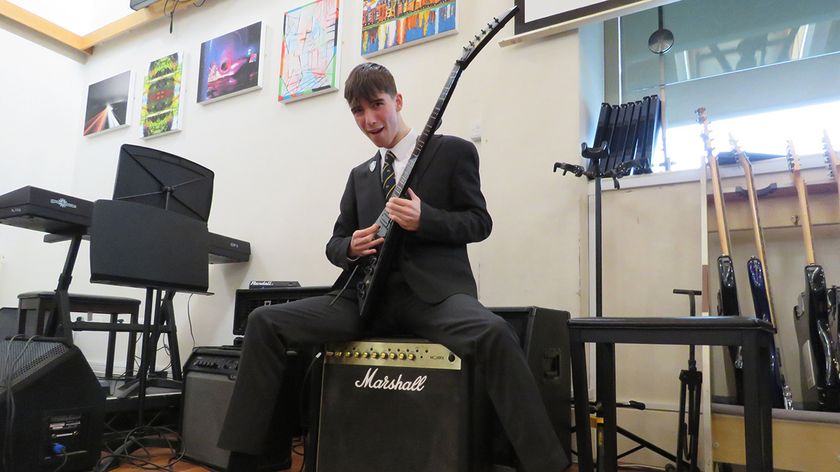27 engaging Twitter tips for musicians
How to network successfully via Twitter
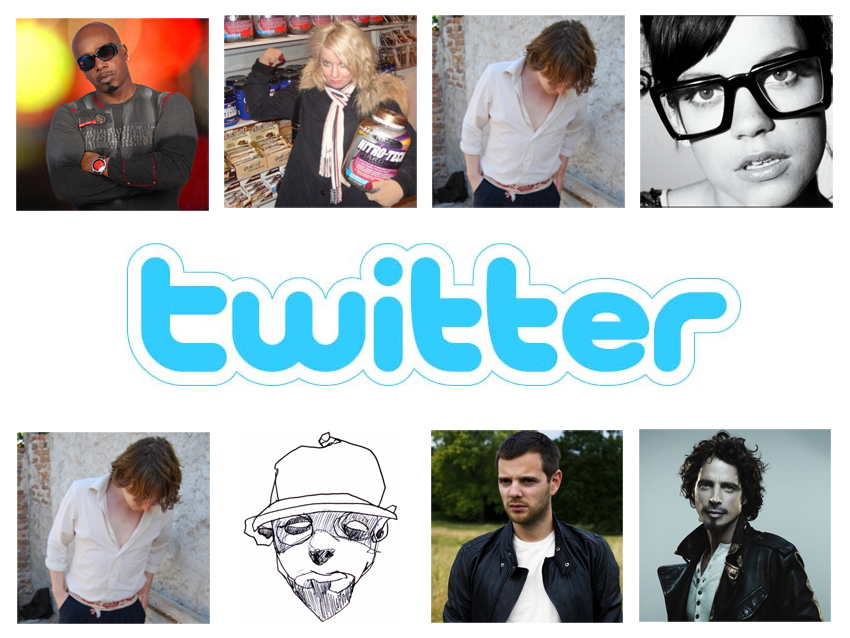
Being a musician, you have one fantastic advantage over everyone else: you can make music. And if people take time out to listen, jam with you or even shell-out to watch you doing it in a dingy venue, how hard can it really be to attract an audience on Twitter?
Loudmouth rockstars have had a platform to gob-off since time began. The birth of the internet made it easier, blogs made it easier still and now, Twitter is the latest icing on the cake for communicating. In 140 characters or less, of course.
But while @britneyspears' record label can Tweet about 'shopping trips to Coral Gables for purses and sunglasses' (yay!) and still attract 362,781 followers (and counting), the average bedroom beatmaker is going to have to try a bit harder.
We've put together the 27 tips you'll need for successful music Twittering - from basic etiquette to chart-domination and every Tweet in-between. If you make music and you're not on Twitter: start here. If you're already a member: STOP, and start again from here...
27 engaging Twitter tips for musicians
1. Have an objective
What do you want to achieve? If you want to widen your fanbase by building a Twitter community around yourself, talk about making music and eventually try to take over the world, you've come to the right place. Knowing what you want is half the battle, stick to the following and you've a great chance of achieving it…
2. Be descriptive

Choose an appropriate username, don't call yourself @TheDarkKnight if your band is called Loose Change. Provide as much information in the bio section as you can - believe it or not, people will read it, as you should read theirs…
3. Get to know your audience
People fill their bios in for a reason - read them, see what they're into and talk about it. That way you will…
Get the MusicRadar Newsletter
Want all the hottest music and gear news, reviews, deals, features and more, direct to your inbox? Sign up here.
4. Engage with your followers

The golden rule. Don't just talk about yourself, take an interest in everyone else. Reply to messages and be as personal as possible. If it's good enough for Trent Reznor…
5. ENGAGE WITH YOUR FOLLOWERS
Seriously, it's that important. More of how to do it effectively below.
6. Learn from the pros
@stephenfry has a gazillion Twitter followers for a reason. Keep an eye on the top Twitter users and learn from the masters. Here are 21 musician Twitters to get you started.
7. Get noticed, make headlines

John Mayer makes the news merely by Tweeting about going to the toilet. He's an international celebrity bed-hopping superstar, however, so we'll have to try harder. Paul Smith was an unknown blogger from Newcastle, UK, before mutating into the headline-grabbing @twitchhiker. His faithful followers offer him accommodation and choose his next round-the-world destination. So do the musicians' equivalent…
Next page: thinking big, Twitpic, Twitterfall and sharing your music
8. Think big
It could be as simple as allowing fans to choose your setlist, but why stop there? Let them plot your tour. The bigger you think, the better. Twitter is still relatively young so, like Paul Smith, it's not too late to be a trailblazer.
9. Talk topical
A fail-safe way to get noticed is to have an opinion… on anything. OK, perhaps Noel Gallagher's relentless spiel of social commentary can grate after a while, so let's keep on subject. Talk about the music you like, make and the gear you make it with.
10. Search for it
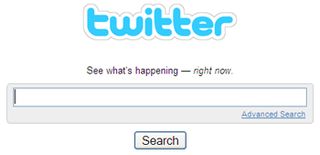
The social networking industry (that's Facebook, MySpace, Twitter etc to you and me) is making a lot of fuss about Twitter's search functionality. It's advanced, so let's use it. Search for keywords and join in other conversations.
11. Be specific
The search facility is 'advanced', remember? If you want to talk about your new synthesizer, don't just search for 'synth', search for "Moog Little Phatty" etc. The quotations tell the search engine you're interested in a specific string of words.
12. Eliminate the useless
You can also use the minus sign (-) to eliminate words: search for "Moog Little Phatty" -virtual, if you're only interested in hardware, for example.
13. Or, let Twitterfall do the hard work
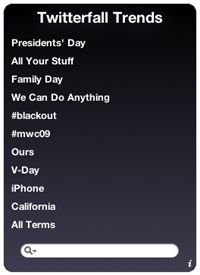
There are countless applications for keeping up-to-date with Twitter. Twitterfall is one of our favourites for following trends and feeding us content we care about most (er, music). Twitterfall's concept is explained rather neatly here.
14. Use the hash tag (#)

When you've finally decided what you're going to Tweet about, add a hash tag to your keywords like this: "Anyone else going to #SXSW this year?" It helps the search functionality and helps people find you.
15. Retweet

Copying is a form of flattery (unless it's copyright material, of course!), so follow your peers and Retweet their most interesting content. Write 'RT @musicradar' followed by the Tweet you want to copy. Hopefully they'll repay the favour, spreading your updates around for all and sundry to see.
16. Always use the @ tag before a username

If you click on the reply link next to, say, one of MC Hammer's Tweets, the reply box opens up with an @ before the username (@MCHammer). If you're referring to any other Twitter user, always manually add the @ tag. It creates a link back to their Twitter homepage and, as before, hopefully they'll repay the favour. More eyes = more followers = more exposure for your music.
17. Follow the 90/10 rule
"90% of what you share on Twitter should be made up of personal insights and thoughts along with a heavy dose of helpful links, while 10% should be made up of messages that more directly benefit you." TwiTips 90/10 argument is a compelling one - try and stick to it.
18. Use Twitpic
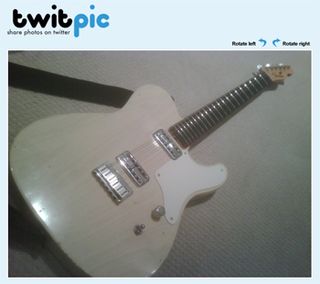
Everybody loves looking at pictures - it's easier than reading and can be a lot more insightful. Post a photo of your new guitar, a studio session or even the sorry excuse for a backstage area at your local pub's gig night. The average Joe will be impressed, even if you weren't.
19. Share your music

Don't forget you're a musician - so share you music! Post interesting remixes and demos or early tracks that your new-found audience might not be aware of. You can post links to YouTube or your MySpace page in the usual way but if you're feeling adventurous use Twt.fm of Blip.fm. Sign-up for a DJ account and amaze your audience with your musical taste.
Next page: thinking bigger, collaboration and exclusive content
20. Share your work-in-progress
Don't stop at demos, either. If you're working on a dance track, post the half-finished drum loops. Or if you're recording with a full band, post the separate guitar parts as you go.
21. Ask for opinion
Asking a fan or fellow music maker for their opinion might sound dangerous, but allowing them involvement in the creative process will endear them to you no end. Hey, if it's good enough for Kanye West…
22. Why not collaborate?
Back to thinking big: if you've recorded a track, why not put a shout out to would-be remixers to give it a going over. Or get others to upload their own guitar solos - you might end up recruiting a new band member!
23. Offer exclusive content
Reward your Twitter crew with music unavailable elsewhere. It might be an early demo, or an alternative take that never made the cut, either way, your faithful followers will feel rewarded and, hopefully, boast about it to all their friends…
24. Find locals, secure your immediate fanbase

Not only can you search Tweets by the language they were written in, you can search by the location they were written. Enter your postcode into the 'places' section of Twitter's advanced search feature and choose a search radius (within 10 miles, for example). Ideal for communicating with locals and offering local discounts, perhaps?
25. Follow industry types, bug them

You'll probably find a number of music executive types will, eventually, come round to the idea of using Twitter. When they do, you'll be a seasoned pro. Keep an eye out for newcomers, befriend them and bug the hell out of them until they give you some attention. You might even get signed (hey, think big, remember?).
26. Spread the word online
Devoting all this time to Twitter might leave your other social networking pages looking rather stagnant. So add a Twitter widget and keep them updated, too. Go to Twitter's widget section to add a pre-built feed to your MySpace, Facebook or Blogger profile. Check out MusicRadar's MySpace page to see what we mean.
27. Spread the word offline
And finally, don't miss any opportunity to pimp your Twitter presence. Add a note to your gig flyers or even announce it during a set.
Good luck, see you on Twitter!
Now read 21 musician Twitters you should be following
Get MusicRadar news delivered straight to your inbox
The free MusicRadar newsletter serves up the week's biggest artist and product news stories alongside exclusive tuition and gear reviews. Sign up for the free weekly MusicRadar newsletter here.
Follow MusicRadar on Twitter for bonus updates
Tom Porter worked on MusicRadar from its mid-2007 launch date to 2011, covering a range of music and music making topics, across features, gear news, reviews, interviews and more. A regular NAMM-goer back in the day, Tom now resides permanently in Los Angeles, where he's doing rather well at the Internet Movie Database (IMDB).


